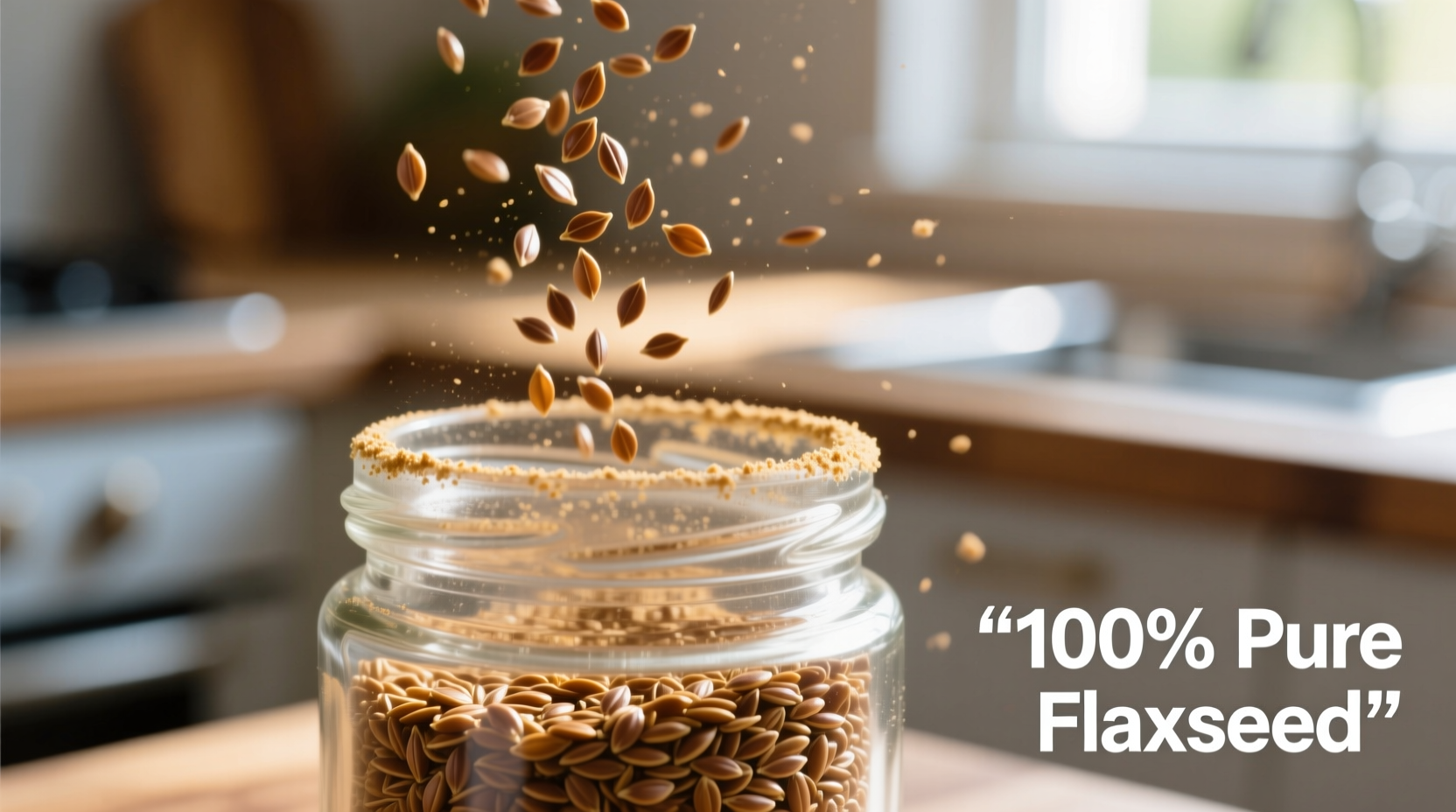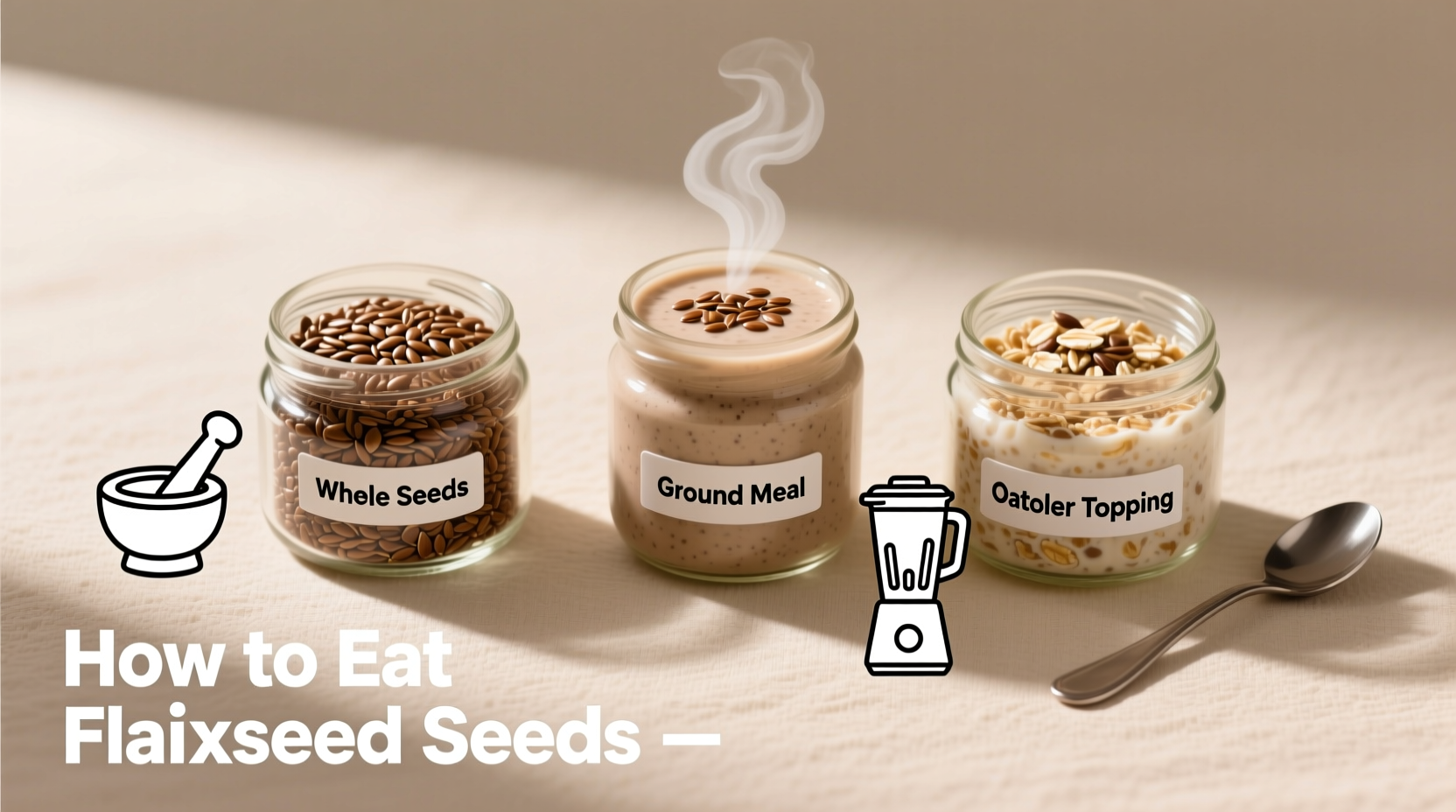Discover how to unlock flaxseeds' powerful health benefits with proper preparation techniques that maximize nutrient absorption. This guide reveals evidence-based methods for incorporating flaxseeds into your daily routine while avoiding common mistakes that could reduce their effectiveness.
Why Proper Flaxseed Preparation Matters
Flaxseeds contain valuable omega-3 fatty acids, fiber, and lignans—but only when properly prepared. Whole flaxseeds often pass through your digestive system intact, providing minimal nutritional benefit. Research from the National Institutes of Health confirms that ground flaxseeds significantly increase the bioavailability of alpha-linolenic acid (ALA), the essential omega-3 fatty acid.
Your Step-by-Step Flaxseed Consumption Guide
Preparation Techniques for Maximum Benefit
Grinding flaxseeds immediately before consumption preserves their delicate oils. Use these methods:
- Coffee grinder method: Grind 2-4 tablespoons of seeds for 20-30 seconds until powdery
- Blender technique: Pulse with other ingredients in smoothies for even distribution
- Pre-ground storage: If grinding in bulk, store in freezer for no longer than 30 days

Daily Serving Recommendations
The ideal daily amount depends on your health goals:
| Health Goal | Daily Amount | Best Time to Consume |
|---|---|---|
| General wellness | 1-2 tablespoons ground | Morning with breakfast |
| Heart health support | 2 tablespoons ground | With evening meal |
| Digestive regularity | 1 tablespoon ground | Morning and evening |
Delicious Ways to Incorporate Flaxseeds
Make flaxseeds part of your daily routine with these practical applications:
Breakfast Boosters
- Mix into oatmeal or cereal (add after cooking to preserve nutrients)
- Stir into yogurt with fresh berries
- Add to pancake or waffle batter
Lunch and Dinner Enhancements
- Use as egg substitute (1 tablespoon ground flax + 3 tablespoons water = 1 egg)
- Sprinkle over salads for nutty crunch
- Mix into meatloaf or burger patties
Baking Applications
- Replace 15-20% of flour with ground flax in bread recipes
- Add to muffin and cookie batters
- Create flaxseed crackers by mixing with water and baking
Critical Considerations for Safe Consumption
While flaxseeds offer numerous benefits, certain conditions require special attention:
Who Should Limit Flaxseed Intake
- Individuals with inflammatory bowel disease should consult doctors before regular consumption
- Pregnant women should limit to 1 tablespoon daily due to phytoestrogen content
- Those taking blood thinners should maintain consistent intake to avoid medication interactions
Storage Techniques to Prevent Rancidity
Flaxseeds' high oil content makes them prone to oxidation. Follow these storage guidelines from the U.S. Food and Drug Administration:
- Whole seeds: Store in airtight container in cool, dark place for up to 1 year
- Ground flax: Refrigerate for up to 30 days or freeze for 3 months
- Always check for musty smell before use—this indicates rancidity
Evidence-Based Health Benefits
Multiple studies validate flaxseeds' health-promoting properties. Research published in the Journal of the American Heart Association shows that daily flaxseed consumption can reduce systolic blood pressure by 10-15 mmHg in hypertensive patients.
The fiber composition in properly prepared flaxseeds supports digestive health by:
- Increasing stool bulk by 30% (per NIH research)
- Reducing constipation symptoms within 24-48 hours
- Supporting beneficial gut bacteria growth
Common Mistakes to Avoid
Don't undermine flaxseeds' benefits with these frequent errors:
- Eating whole seeds exclusively: Your body can't break down the hard outer shell
- Consuming rancid seeds: Oxidized oils may cause inflammation
- Drinking insufficient water: Flaxseeds require adequate hydration to work properly
- Overconsuming: More than 4 tablespoons daily may cause digestive discomfort
Practical Tips for Special Diets
Flaxseeds adapt well to various dietary needs:
- Vegan diets: Use as egg substitute in baking (1 tbsp ground flax + 3 tbsp water = 1 egg)
- Gluten-free cooking: Bind ingredients in breads and baked goods
- Keto diets: Incorporate in moderation (1 tbsp contains 2g net carbs)
Frequently Asked Questions
Can I eat flaxseeds raw without grinding?
While you can eat whole flaxseeds raw, your body cannot properly digest them, significantly reducing nutrient absorption. Ground flaxseeds provide up to 400% more available nutrients according to research from the National Institutes of Health.
How much water should I drink with flaxseeds?
Consume at least 8 ounces of water for every tablespoon of flaxseeds to prevent digestive discomfort. The soluble fiber in flaxseeds absorbs water, so adequate hydration ensures proper digestion and prevents potential blockages.
Can I cook with ground flaxseeds?
Yes, but add ground flaxseeds toward the end of cooking to preserve their delicate omega-3 fatty acids. High heat can damage these beneficial compounds. For baking, incorporate ground flax into batters rather than heating dry powder directly.
How long do ground flaxseeds stay fresh?
Ground flaxseeds remain fresh for about 30 days when stored in an airtight container in the refrigerator. For longer storage, freeze ground flaxseeds for up to 3 months. Always check for a musty smell before use, which indicates rancidity.











 浙公网安备
33010002000092号
浙公网安备
33010002000092号 浙B2-20120091-4
浙B2-20120091-4